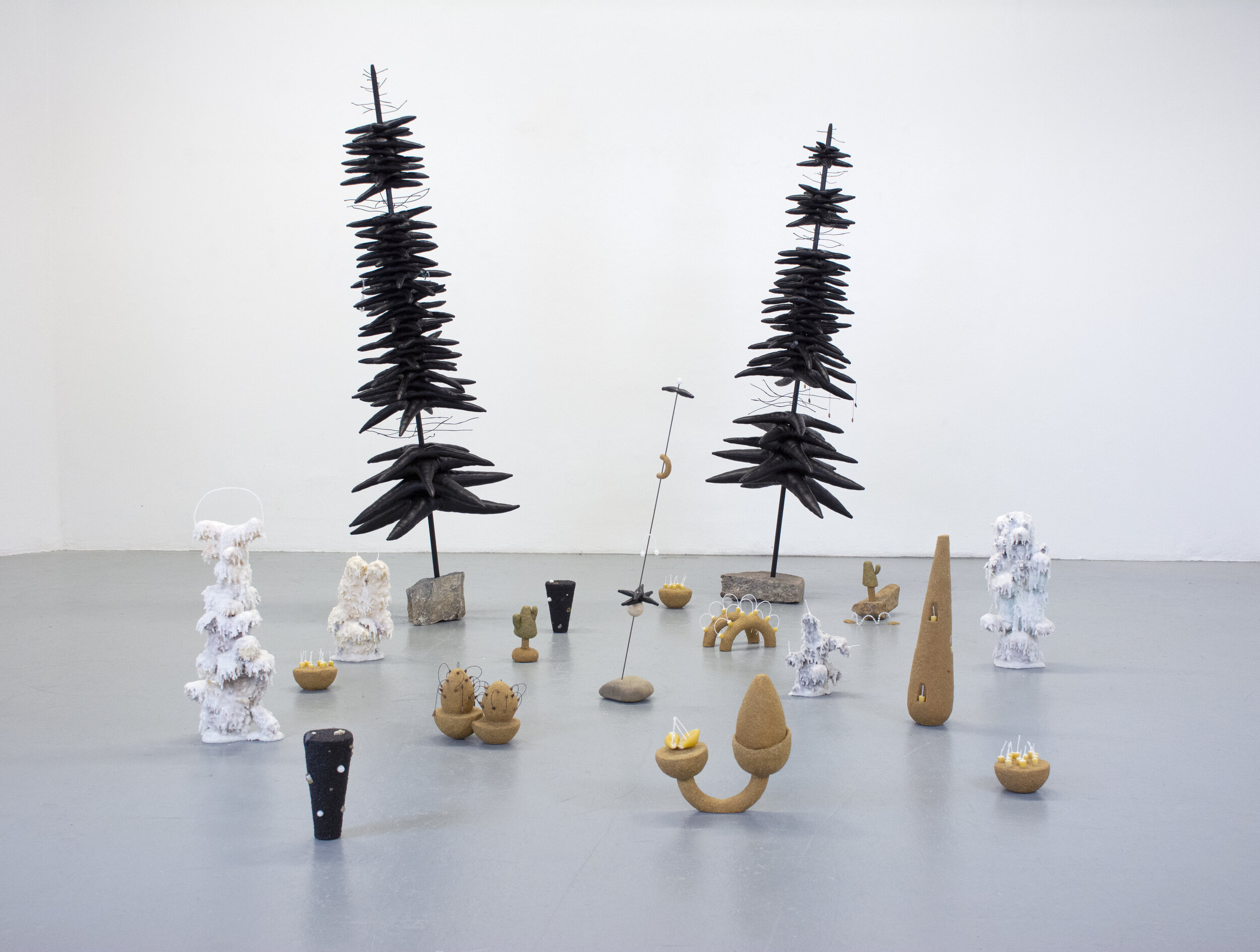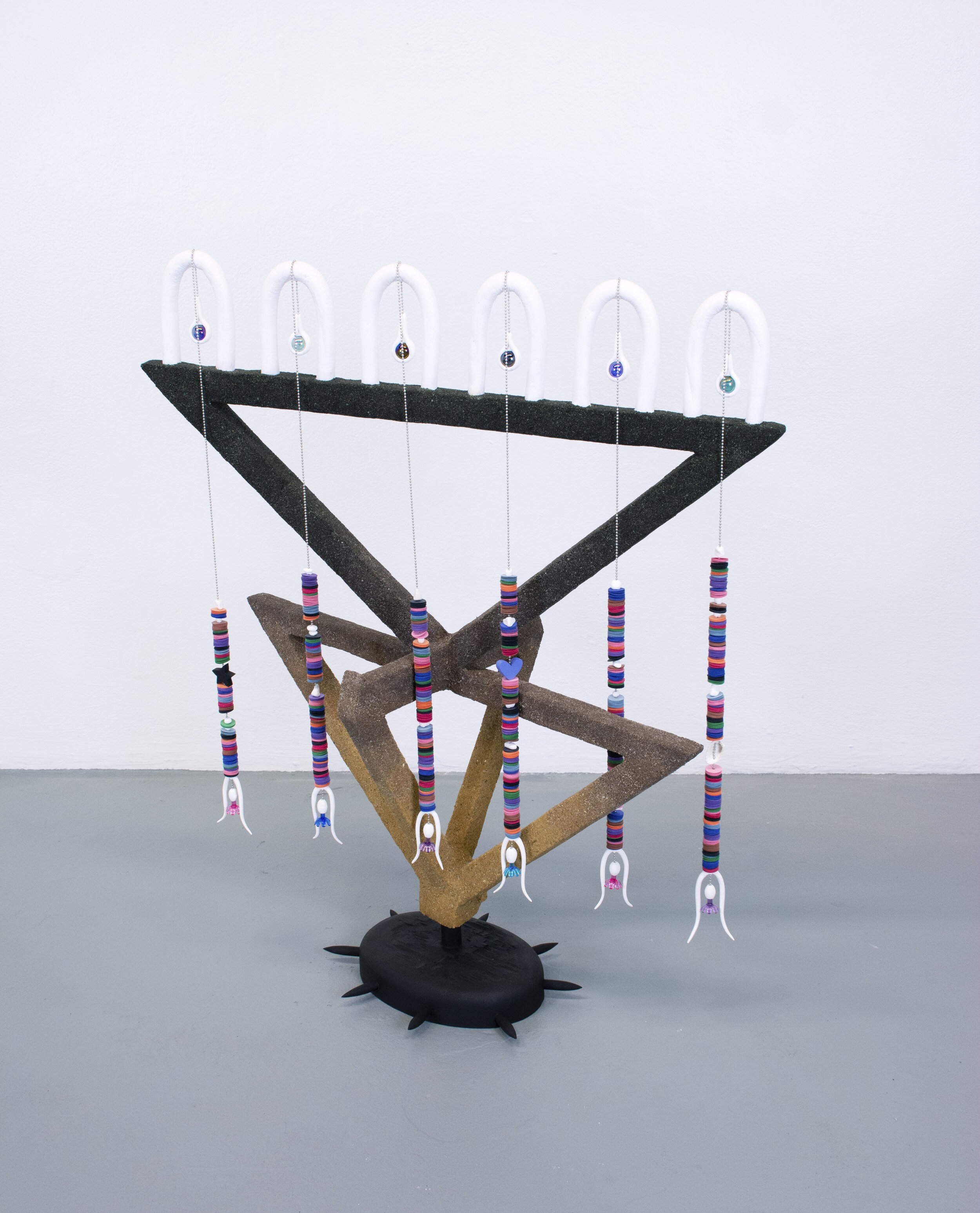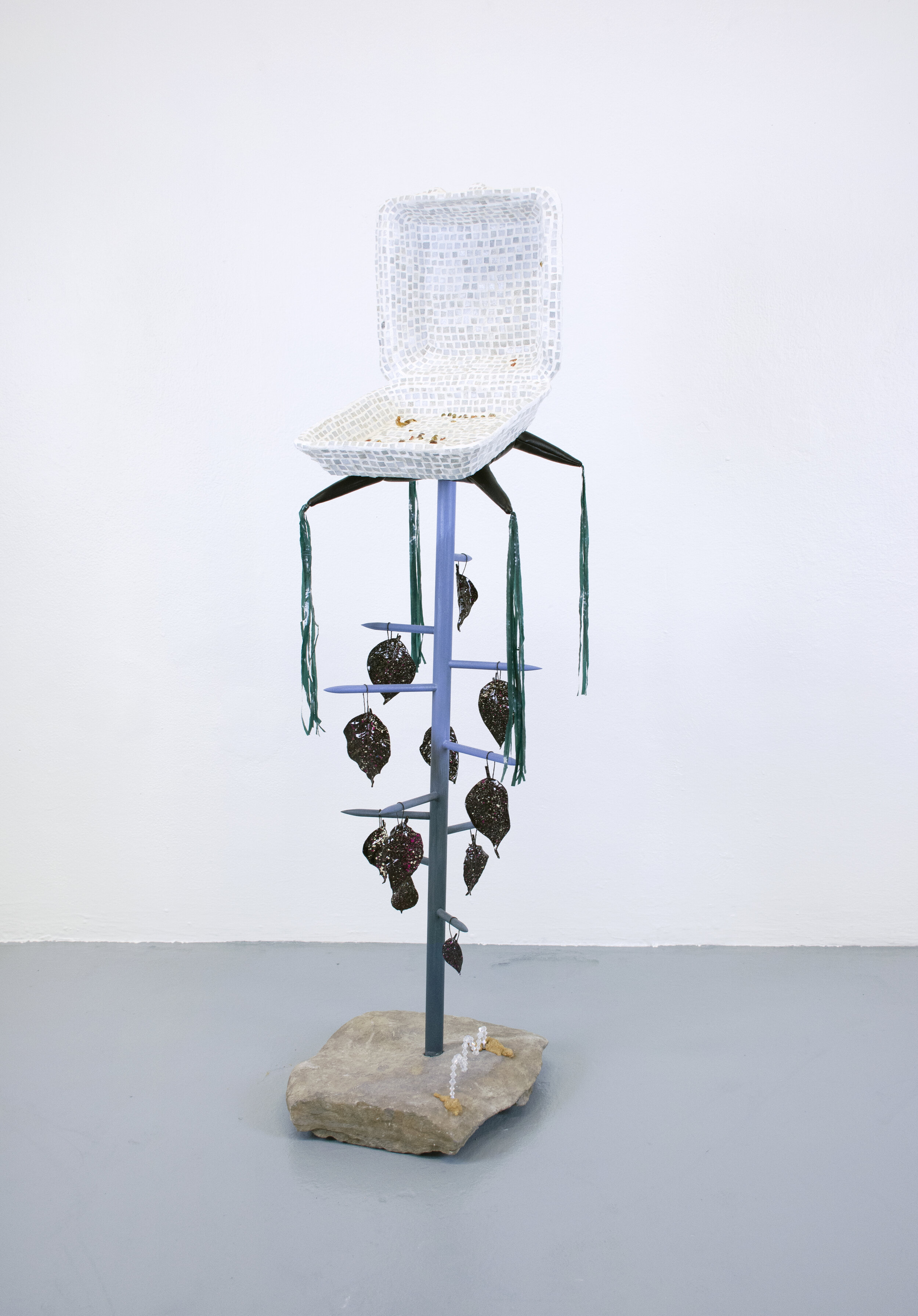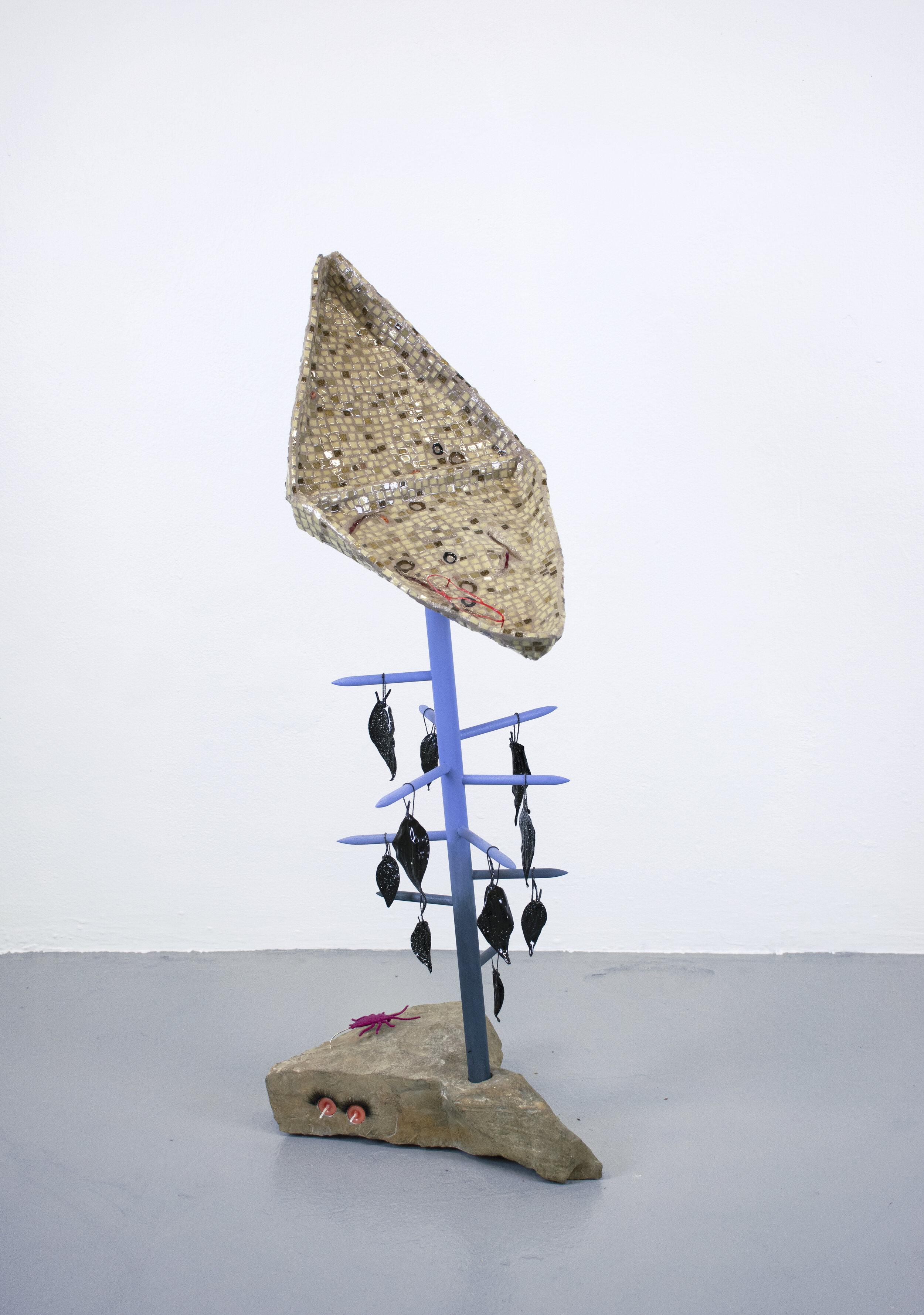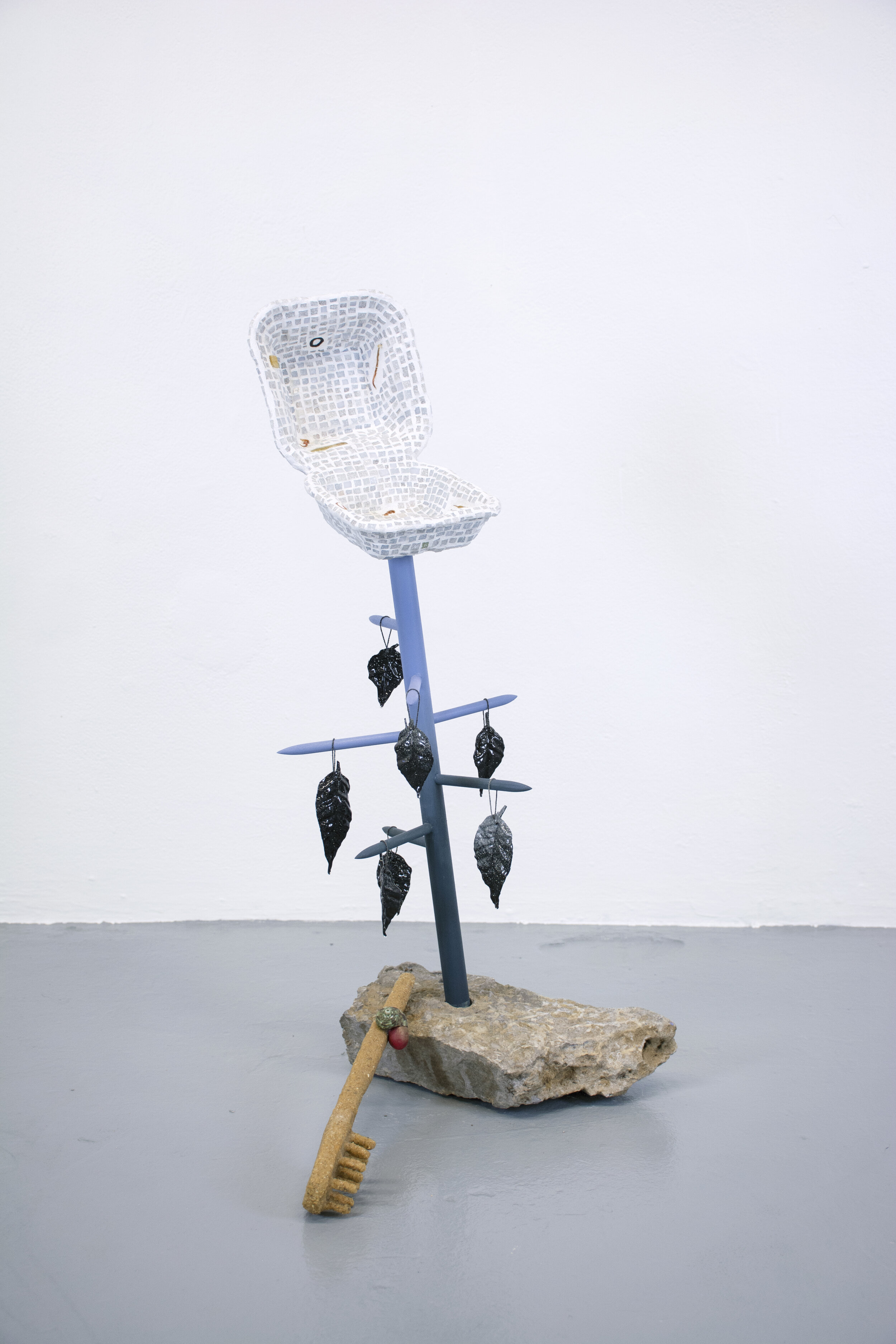Sidney at Bunker Projects in Pittsburgh, PA where she is currently an artist-in-residence. Photo by Sarah Huny Young.
Sidney Mullis
Sidney Mullis is a sculptor who lives and works in Pittsburgh, PA. Her work has been exhibited nationally and internationally, including Berlin, Tokyo, England, and Croatia. Solo shows include the Leslie-Lohman Museum (NYC), Wick Gallery (NYC), Neon Heater Gallery (OH), Bucknell University (PA), Rowan University (NJ), Galleri Urbane (TX), University of Mary Washington (VA), and more. She has been an artist-in-residence at The Wassaic Project, Women’s Studio Workshop, MASS MoCA, Ox-Bow School of Art, among others. Her work has been featured in the publications Hyperallergic, Young Space, De:Formal, Friend of the Artist, and Sculpture Magazine. Mullis currently teaches 3D Foundations, Sculpture, and Critical Studies at Penn State University. She is the program coordinator of Penn State's John M. Anderson Endowed Lecture Series and was awarded a Creative Achievement Award by the University in 2016.
Interview with Sidney Mullis
Questions by Andreana Donahue
Hi Sidney! You recently moved to Pittsburgh. In what ways has living and working there been beneficial to your practice?
Yes! I moved in early May to be a resident artist at Bunker Projects. The bustle of the city, even in quarantine, has provided great fuel for my studio practice. I moved from a small-ish, sleepy town dominated by a university, so it’s been wonderful to see people of all ages living their lives motivated by things outside of attaining a degree. And, if it becomes safe to go out in the future, I will definitely be exploring all the art museums, orgs, galleries and other resources. The Mattress Factory, the Andy Warhol Museum, The Frick, the Pittsburgh Glass Center…so much!
Photo by Cody Goddard
In a past interview you mention that as a sculptor you “get to influence how a body might move through a space.” Can you talk more about this and how your consideration of the viewer’s experience has progressed over time?
I grew up dancing, so my first art experiences were tangled up with my body. When I moved to sculpture, I was very aware of gallery goers and the performances they seemed to automatically know and perform in the gallery space. They viewed art from a distance, quietly—forcibly pensive even. I wanted to implicate that choreography.
In my graduate thesis, I made these spandex hats and steel selfie sticks that gallery goers could wear and use in the exhibition space. You not only saw the work, but felt the work on your head and hands. At the time of my thesis, selfie sticks were fairly new and museums were beginning to ban them for safety reasons. Rather than curtail the gallery goer’s experience yet again, I thought why not make my own. ¯\_(ツ)_/¯ They were these gold, looping steel rods that were up to 6’ long and connected to smartphones via Bluetooth. They were silly and made the user have to lean back to counter the weight of the stick to get a selfie. A new, awkward dance for the gallery.
In recent shows, I’ve been thinking more about how I can invite a viewer to want to get close to an object. How can I build not only formal qualities, but an energy into a surface to draw someone closer? For my next solo show in November, I have been thinking about this alongside another wearable. With physical interaction so limited right now, I would love to have the option for the art on the skin. On the bottom of the feet. An effort toward communal grounding and getting back into our bodies, together.
Altar to resurrect my seven-year-old self, 2017-2019,. Handmade paper pulp, gravestone dust collected from a gravestone carver, wax, sand, dry rigatoni and manicotti pasta, pleather, black streamers, teddies that people did not want, olive pits, paint, wire, shells & coins from my childhood collections, 8x4x8’.
I find your work to be richly imaginative, with a striking sense of visual poetry - tubes of rigatoni masquerade as candle sticks, stacks of black starfish become towering trees, or a jump rope appears to levitate. How do humor, memory, and personal narrative function in your work?
Wow, thank you! I had a pretty imaginative childhood where I would make up games and dances and plays (and also try to sing as the live orchestra). I think this is baked into how I approach making things now—playful, nonsensical, and sometimes downright embarrassing. It allowed for my dress-up box of clothes to morph into many things and has extended to my studio materials and their transformation into many, many things.
Humor is an entry point into the work. If I can make the viewer laugh (or at least blow air from their nose) from something I’ve made, they might begin to trust the work and stay a bit longer allowing for its darker layers to come to the surface. I also embed humor as a personal coping mechanism. I usually have a tumultuous relationship with the work’s content and start of each new project pretty alarmed and confused. Humor helps break that down. It in fact helps me want to stay a bit longer, too.
You seem to embrace rather than shy away from the handmade nature of your work. Can you walk us through your process and approach to transforming materials?
I get ideas and try them out. I go back and forth between particular actions making mental notes of what is lost and gained from translating mind to material and back again. Some of those tests become pieces. I don’t wait too long for things to reach any sort of manufactured or machine-like perfection. I am not really into that type of capitalist mastery.
Installation shots from Wick Gallery (Bushwick, Brooklyn). Exhibition called Of Ash and Ice. Photos taken by Matthew Sherman.
Many of your installations are evocative of props or ceremonial altars. Can you talk about your ongoing interest in ritual?
I think a lot about how repetition makes life, life. We learn our first words through repetition. We learn the alphabet through repetition. Our days are based in time cycles, eating cycles, and sleeping cycles. As humans, I find that we slowly turn that repetition into ritual, giving those habits meaning.
I think there is magic in that transition from repetition to ritual. I am really attracted to that magic…but, I am even more attracted to it when the ritual breaks down and reforms into something else. When black starfish become towering trees. I like seeing (and welcoming) that instability of ritual—that sureness of change despite our lives of repetition.
Do you see your work as subversive? If so, what ideas or systems are you reacting against?
I started this body of work, when small words made big worlds, after having a strong reaction against being told I should feel grown-up now. At first, I brushed this off as a Millennial complaint and was embarrassed to even voice these feelings. Over time, though, I was able to explain how this myth of ‘finding who I really am’ is based on entering American society, as it is, quietly validating its systems as the best possible option for the next years of my life. Quiet, social integration feels so incredibly wrong. It did when I first started writing about the motivations behind this work and has only been exacerbated since.
Resurrecting Sid-the-Kid is an act of resistance toward the formation of a self that really just reifies terrible, overwhelming American systems. Systems that continue to fortify the white cis man’s lifestyle as the definition of what life is in our society. Resurrecting Sid-the-Kid also stalls the formation of a self to resist coming-of-age tropes. Tropes that are also from a man’s perspective, born out of a man’s story, to prepare children for a patriarchal world. It’s an old tale really, yet it persists. For the success of few, and to the harm of many.
Repose of a No-Handed Cartwheel, 2018. Olive pits, string, sand, wire, fake grapes, pleather, decorative sea shells, grommet, paint, cast concrete, 2x4x2’.
Some of the diverse objects incorporated into when small words made big worlds are seashells & coins from your childhood. Do you still have collections? Can you tell us about a few meaningful objects you live with?
Because I have more artwork than I know what to do with, I do not have collections. I like to live with as few things as possible because I feel the weight of all the things I’ve made, and all the things I see and am surrounded by throughout the day. My mom has saved special things from my childhood that I like to look through when I visit. I often bring them back to studio. That’s how I found the seashells and coin collections.
I am a sucker, though, for hand-me-downs, handmade gifts, homemade food, handwritten letters and thank you notes from students.
How do you usually prepare for a solo exhibition that includes an elaborate, large-scale installation? Is there a lot of planning and preparation involved beforehand or do you respond somewhat intuitively to the space while installing?
I think I do best responding to the space and working with the curator and their ideas. Their knowledge of the space and how people move through it is helpful and integral to how I respond and resolve the installation.
Can you provide some insight into the genesis and development of your mating rituals series? I’m especially curious about the garments and repetitive movements that appear in these video works.
The mating ritual series is a group of invented animals performing their mating rituals in the form of video projections. The animals are recorded in front of a green screen and highly edited in iMovie. To be more specific, the movement of the animals are literally built in iMovie. 0.1 second of a recorded movement gets duplicated and mirrored over and over to begin to make the mating ritual and then the next 0.1 second is found and duplicated and mirrored and so on.
At the time, I was preoccupied with evolutionary psychology and how the perception of my gender as a woman is culturally dictated and consistently conflated with my sexuality. So, I donned the guises of these animals to build an alternative kingdom with room for myself and others. When all the animals are projected, the gallery space becomes a mating space and they perform their song and dance in hopes of getting the attention of the gallery goer.
The garments and repetitive movements were built from studying popular music videos (equating them to instruction manuals for our contemporary mating rituals), as well as content from National Geographic. So, for instance, to make the Ball-tipped shaker, I was looking at Nicki Minaj’s Anaconda music video and mating rituals from the red-hooded seal.
Over the past several years you’ve attended Wassaic, Women’s Studio Workshop, MASS MoCA, and Ox-Bow, among others. What did you focus on at your most recent residency?
The last residency I did was the Wassaic Project, which I highly recommend. Will Hutnick is an amazing residency director, as well as everyone else involved. I made great friends and it was a dreamy month-long stay.
I made The Town Between My Toes while there, but before the residency started, all I really knew is that I wanted to make those black pleather trees. There isn’t much around Wassaic, NY, so I spent maybe two weeks beforehand collecting materials that I thought I could use—sand, wax, cotton string, black pleather, wax, forgotten teddy bears, wire, olive pits, and dry pasta. Then I packed my crockpot and sewing machine and was set to go.
I hadn’t had consistent studio time for awhile or a gigantic space to work in, so I was pretty focused and worked a lot. Again, it was a dream.
The Town Between My Toes, 2019. Sand, wax, dry rigatoni and shell pasta, pleather, black food coloring, olives, carrots, olive pits, cotton string, resin, wire, wood, paint, rocks, forgotten teddy bears, size varies (6' tall)
As a professor at Penn State, how have you been adjusting to the challenges of teaching and facilitating critical exchanges about visual art remotely? Has anything unexpected (or even groundbreaking) resulted from this time?
What was important to me at the outset of being thrust online was to be as communicative, reliable and consistent with my students as possible. I wanted our class to be the most stable thing for them while so much else was uncertain—and continues to be uncertain!
I am a big proponent of artwork that is made outside the traditional studio-material-gallery-museum scenario and regularly show artists that work in this vein to my students. So now, it was our challenge to do this! And great risks were had! I think that without having access to their studios, gallery spaces, and equipment, students really took to heart that anything could be a viable material and made great conceptual and material choices that they otherwise would not have if not for the circumstance. We turned it around. We used it as fodder. Just like artists do.
Can you talk about your recent Grizzly, Grizzly contribution Letters to My Students?
At the end of this spring semester, I became really preoccupied with how to conclude my courses in a meaningful way that wasn’t just a bit of small talk, an awkward Zoom wave, and the closing of a web browser. How do you say goodbye to groups of students during a global pandemic? How do you say goodbye to students that continued to foreground their education despite consistent uncertainty, political chaos, rising unemployment—bracketed by the fear of getting sick? I decided to write them letters, which I read over Zoom at the end of each class. They are frank, vulnerable, somewhat circuitous, and a little inspiring. I mostly wanted them to know that the ritual—even the school ritual—changes. That meaning changes. The rules, those change, too. And, it is okay to not know. If you are curious, you can read them here. Page 19.
Is your writing tied at all to your studio practice, or do you see it as an entirely separate endeavor?
In 2014, I made a poetry book of appropriated language sourced from make-up tutorials made by young girls on Youtube. I also declared an email exchange that I had with a couch a work of art, too. You can see both here. I would love for writing to become a stronger force in my practice and develop it into creative projects more often. Right now, my writing is mostly in my sketchbook.
What have you been reading, watching, or listening to these days?
I just finished reading The Coddling of the American Mind by Greg Lukianoff and Jonathan Haidt. It’s good and cOnTroVerSiaL. I just finished watching an Indian Matchmaking series on Netflix, which was fascinating. I listen to a lot of music, which is maybe not a surprise with my background as a dancer. And podcasts put me to sleep.
What are you working on right now? Do you have any upcoming projects, exhibitions, or other news to share?
I am working toward a solo show in November at Bunker Projects in Pittsburgh, PA. Come!! Hopefully, it’ll be open to the public!
To find out more about Sidney and her work, check out her website and IG.











